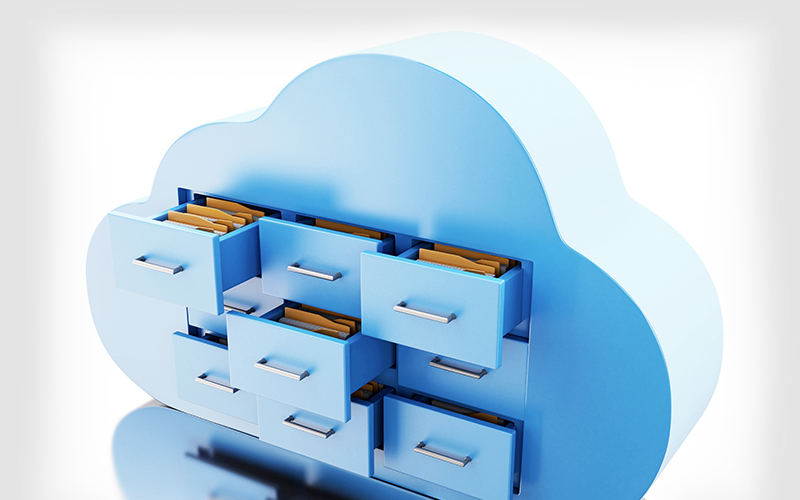
It’s a fact of life in modern business and industry: You’ll amass more data by the end of the month than you likely did over an entire 12 months just a few years ago. The bottom line is that data isn’t going away any time soon, and it grows in quantity and importance with each passing day. Managing that data has evolved as a crucial aspect of conducting business, akin to HR or R&D. How effectively you manage your organization’s data will dictate a lot about your business, impacting virtually every aspect of your enterprise, not least your level of productivity and your bottom line.
Traditional data storage systems have been useful — to a point. The operative term here being ‘traditional.’ Limitations on performance, scaling and efficiencies have made outmoded data filing cumbersome, ineffective, and costly. Enter the panacea: migrating existing servers and storage to a cloud-based storage environment. Managing data at the cloud level is analogous to exchanging a single-engine turboprop for a wide-bodied supersonic jet aircraft. The benefits are numerous, tangible, and once you’ve migrated, you’ll wonder how you ever managed your data up until now.
The first think you’ll notice with cloud data storage is a dramatic increase in productivity and performance. Faster, state-of-the-art storage translates to better response times over outmoded systems. It also means faster batch processing, allowing you to process more orders in less time more efficiently. In addition, you’ll experience faster search times and enhanced storage structures, giving customers faster access to information.
In terms of scalability and agility, the cloud means near seamless management. Need more storage? Scaling up is effortless. Limitless access to added storage also allows you to nimbly tap into your data when and where you need it. There’s also greater flexibility for when you want to expand your storage capabilities. As for availability, migrating to the cloud means cloud-based recovery strategies like cloud-based backup, disaster recovery, high availability, and hardware replication mean that your data is always accessible.
Among the chief reasons for integrating a state-of-the-art, off-site data storage service is risk mitigation. Moving to the cloud provides greater peace of mind with a range of IT recovery services, including cloud backup, disaster recovery, high availability, and hardware replication services. Keeping these services on-site at the data center poses significant risk of loss and interruption. With the cloud, risk is minimized, and data is protected.
Migrating data to the cloud also means smarter realignment of resources. With off-site storage, the cloud vendor assumes many of your server and infrastructure management tasks, freeing your IT department to tackle other jobs. As such, the cloud vendor designs, plans, purchases, and maintains the server and storage infrastructure — freeing IT personnel to focus on revenue-generating tasks.
Finally, but not insignificantly, there is the issue of cost. Since the cost of data storage and associated servers becomes part of an organization’s operating budget (which doesn’t require management approval to implement), storage becomes OpEx, or an operating expense, rather than CapEx, or a capital expense, a significant plus for your organization. In addition, by migrating data storage to the cloud, your data is now managed by your service provider, thereby reducing administration costs. Further reducing expenses is the fact that you’re no longer spending valuable financial resources to house multiple servers on site or externally. Your data center costs are now woven into your cloud storage system contract. No surprises! And you’ll no longer have to purchase and maintain redundant storage for raid sets, mirrored storage, and hot spare disk drives. You simply contract for the storage you need and use. Again, no surprises!
There are also additional benefits and cost savings available from a service level agreement (SLA). An SLA is a documented commitment to deliver the outlined service levels for performance, uptime, support and scalability. If the service levels are not met, then the end user receives a credit from the service provider. Only the largest companies have the resources to purchase enterprise storage and provide the required management and support to provide SLAs like these on their own.
When you tally the advantages of migrating data storage to the cloud, it’s almost a no-brainer: For flexibility, efficiency, data protection and everyday cost savings, the cloud is the place to be for today’s data-rich IT department. Your SIAS representative can point out all the ways cloud-based storage will make the world of difference to your data storage challenges.

